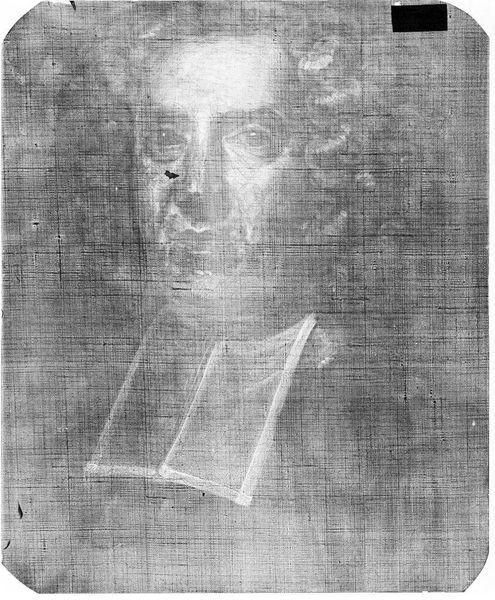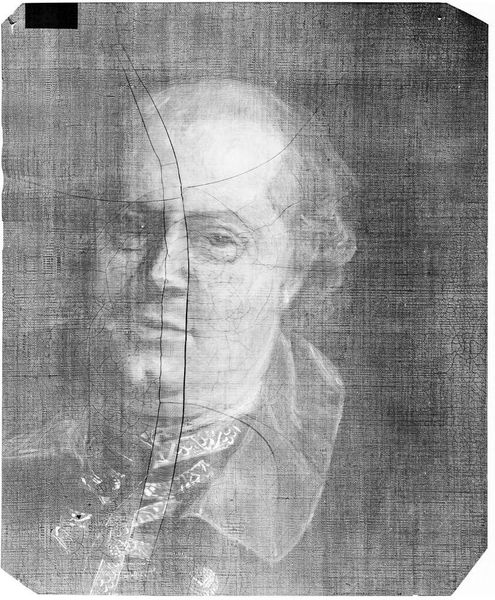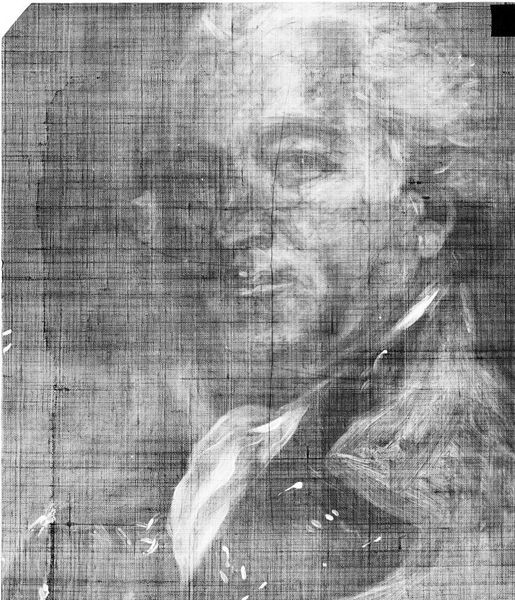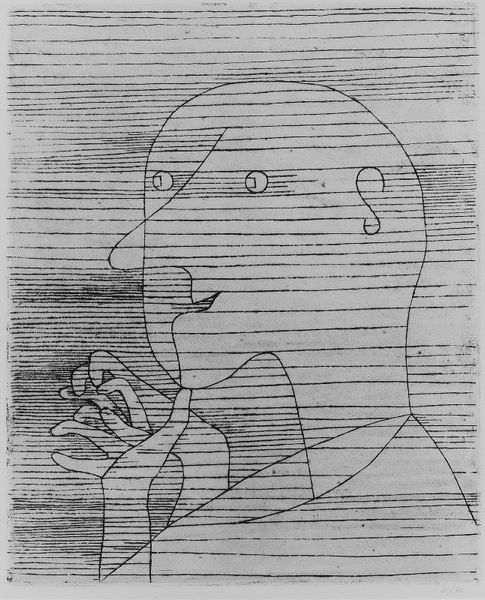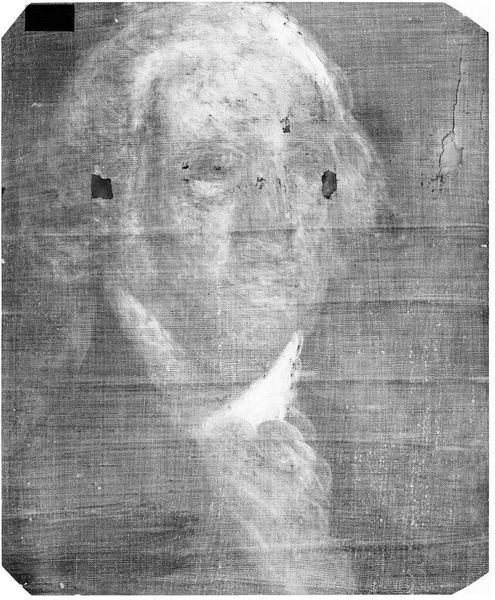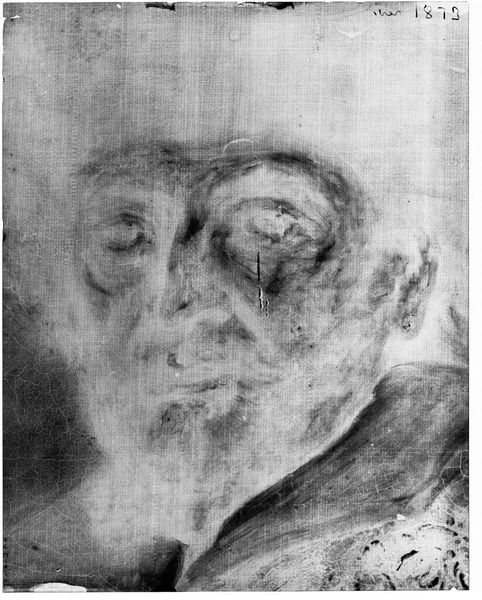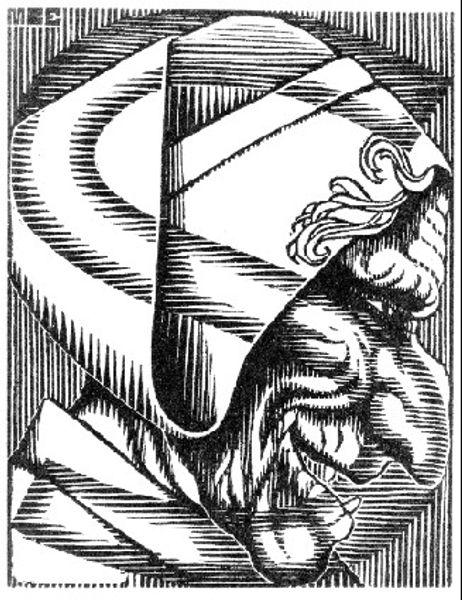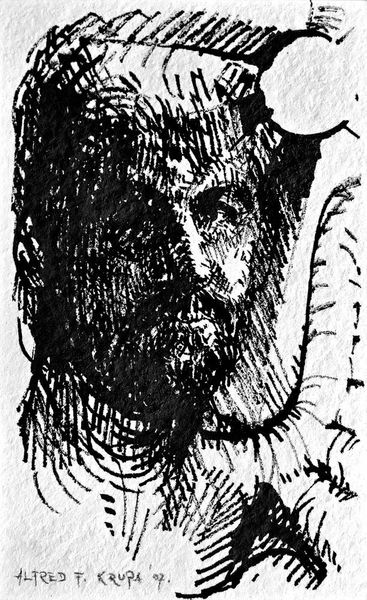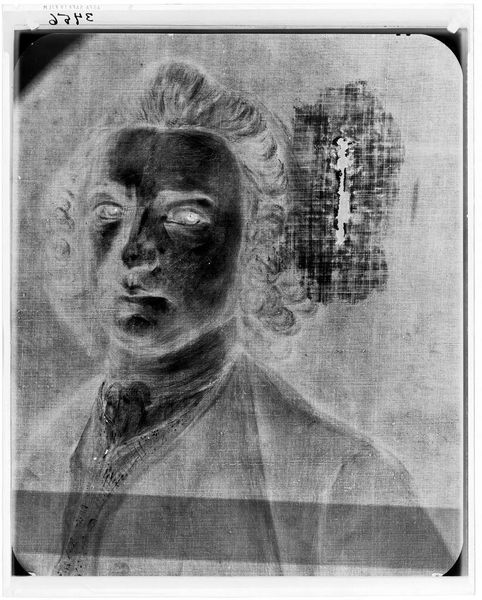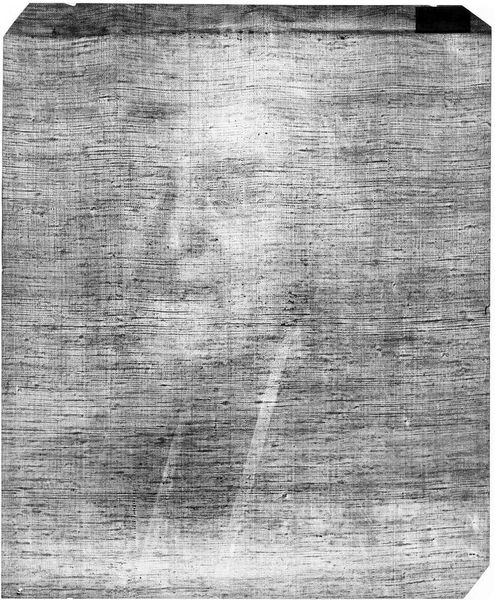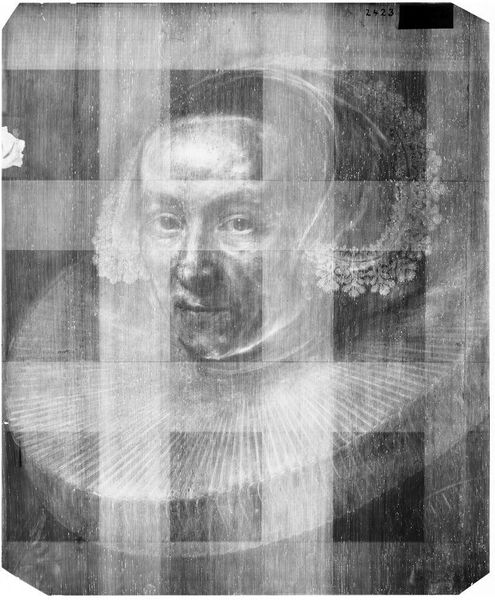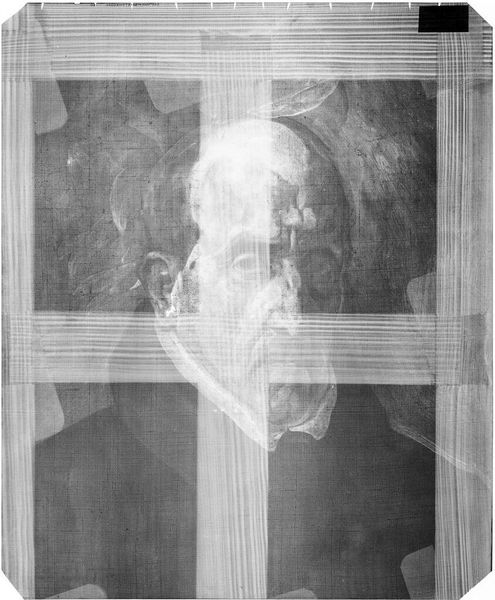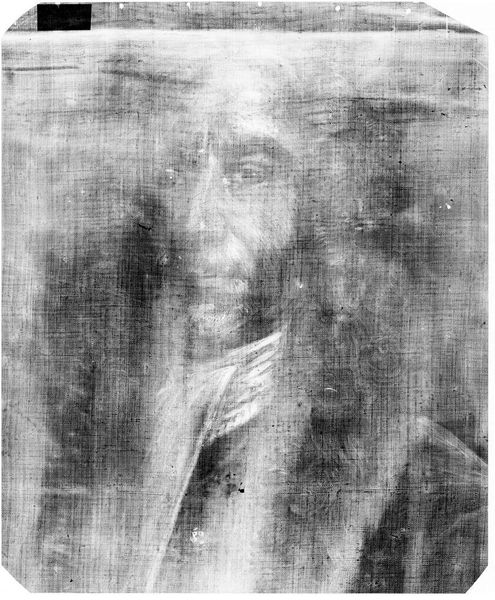
drawing, graphite
portrait
art-deco
drawing
cubism
geometric
graphite
portrait art
modernism
Copyright: M.C. Escher,Fair Use
Editor: So this is M.C. Escher’s "Initial A" from 1931, created with graphite, it’s certainly a striking piece, full of contrast and geometric patterns that build up a face. What do you make of it? Curator: Immediately, I'm struck by how Escher manipulates geometry to create this portrait. Consider the sociopolitical climate of the 1930s. Amidst rising totalitarianism, the individual was increasingly being abstracted and redefined by the state. Could this fragmentation of identity be a visual manifestation of that era’s anxieties about individualism versus collectivism? Editor: That’s a great point. I was mostly seeing the artistic style, but how would you relate this image to contemporary theory? Curator: Think about the gaze. How is Escher presenting this figure? Is it an empowered gaze, or one that's being dissected, objectified? This brings up questions about the power dynamics inherent in portraiture, particularly in a modernist context where traditional forms were being challenged and deconstructed. Who gets to represent whom, and what are the ethical implications? Editor: I hadn’t considered the power dynamics, but that reading does add another layer to the piece. The geometric division really takes on a new significance when seen that way. Curator: Precisely! Escher isn't simply creating a likeness; he's forcing us to confront the act of seeing, and how social structures shape our perceptions. What assumptions do we bring when viewing this "portrait?" Editor: I suppose I was approaching it just looking at composition. This helps me think about it on a much more profound level. Thank you for helping me think critically. Curator: It is by such engagement that we keep art history alive and pertinent, and through which art continuously informs our present.
Comments
No comments
Be the first to comment and join the conversation on the ultimate creative platform.
